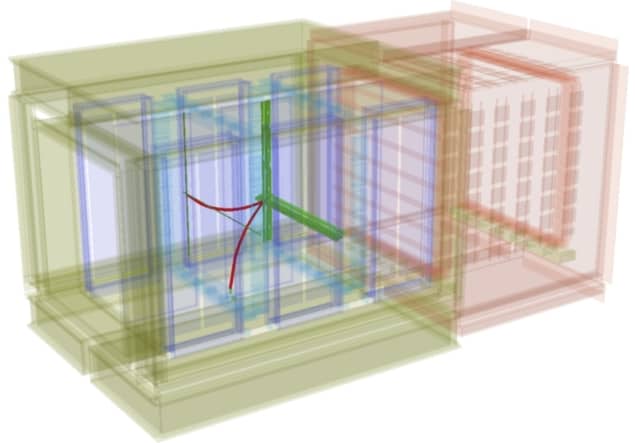
Teppei Katori and Pierre Lasorak at Queen Mary University of London have studied data from the the T2K neutrino experiment in Japan to search for signs of single gamma-ray emission from neutrino interactions. Katori explains why scientists around the world are looking for this elusive signal, and describes the latest results from T2K. The research is reported in full in Journal of Physics G, published by IOP Publishing – which also publishes Physics World.
Why did you carry out the research?
We are looking for the emission of a single gamma ray from neutrino interactions. Neutrinos interact with atoms only through the weak nuclear force, which means that in general neutrinos don’t emit light. However, photon emission from neutrinos is predicted as an extremely rare process, either via nuclear physics or as a result of new particles beyond the Standard Model. It would be extremely exciting to find this process in our experiment, which is the T2K neutrino experiment in Japan.
One of the most interesting aspects of current and future experiments like T2K is to measure the “oscillations” between muon-neutrinos and electron-neutrinos. Scientists are looking for electromagnetic signals from the muon-neutrino beam, because electron-neutrinos oscillated from muon-neutrinos create electrons via charged-current weak interaction. If neutrinos emit photons, this mimics neutrino oscillation signals because photons often mimic electrons. In fact, the neutrino photon-emission process was proposed as an explanation of the recent MiniBooNE signal.
Why is this research important?
This is the first attempt to look for mysterious single gamma-emission in the energy region relevant to the MiniBooNE, T2K, and future Hyper-Kamiokande and DUNE experiments. All of these experiments are looking for electron-neutrinos produced from muon-neutrino beams to study neutrino mass properties that are beyond the Standard Model. And neutrino single-gamma emission might be an important background to enable us to measure neutrino mass properties correctly.
Theorists are also predicting new processes, involving new neutral particles, which would produce a single gamma ray. For example, several models predict that neutrinos oscillate to “heavy” neutrinos, which then decay to photons or photon-like particles. It is relatively new field to look for new particles in neutrino beams and neutrino detectors, and our data can offer one of the first constraints for some of these models.
What did you do in this study?
T2K is studying neutrino oscillations from a muon-neutrino beam generated at the J-PARC nuclear physics site. The beam is monitored by a “near detector” at J-PARC, called ND280, before being measured by the Super-Kamiokande neutrino detector 295 km away. The ND280 is equipped with a high-precision tracking device for measuring particle trajectories – a time-projection-chamber (TPC) detector in a magnetic field – which makes it ideal for making the first observation of neutrino single-gamma emission.
The TPC is particularly useful because neutrino interactions that create a gamma ray also produce an electron–positron pair. Since they have opposite charge, the trajectories will bend in opposite directions in a magnetic field. So we studied the data to see if we could identify two electron-like tracks bending in opposite directions from a neutrino interaction, which would show that the neutrino interaction had made a single gamma ray.
What did you find out?
Unfortunately, on this first attempt, we couldn’t find any evidence of neutrino single-gamma emission in the data. Although we observed many gamma rays from neutrino interactions, our simulation suggests they mostly came from neutral pi mesons (π0) – which are commonly produced by neutrino interactions and produce two gamma rays when they decay.
Since the neutrino beam from J-PARC is spread all over the place, lots of gamma rays are produced all around the ND280 detector and some find their way into the TPC. We were unable to estimate this background with high precision, so the data might contain neutrino single-gamma emission but we cannot isolate the signal from the background.
What do you plan to do next?
The T2K experiment is now being updated, and a series of new detectors are being designed and tested in different parts of the world. For example, the WAGASCI and BabyMIND detectors have recently been installed, providing larger volumes that can prevent gamma rays from entering the detector from outside, and we may use these data to look for the single-gamma emission process.
Meanwhile, both the MINERvA and MicroBooNE experiments at Fermilab have been optimized to measure neutrino interactions and they could make the first observation of neutrino single-gamma emission before us. The field is very competitive!
The full results of the study are reported in Journal of Physics G: Nuclear and Particle Physics. The analysis uses the data from the T2K experiment, which involves 317 collaborators who together have contributed to the design, construction and operation of the experiment, as well as data simulation and analysis.



